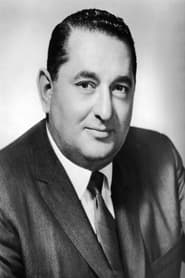

Showman(1963)
Albert and David Maysles (Gimme Shelter) directed this 53-minute documentary about movie tycoon Joseph E. Levine (1963). Preserved by the Academy Film Archive in 2012.
Movie: Showman

Showman
HomePage
Overview
Albert and David Maysles (Gimme Shelter) directed this 53-minute documentary about movie tycoon Joseph E. Levine (1963). Preserved by the Academy Film Archive in 2012.
Release Date
1963-01-02
Average
6
Rating:
3.0 startsTagline
Genres
Languages:
Recommendations Movies
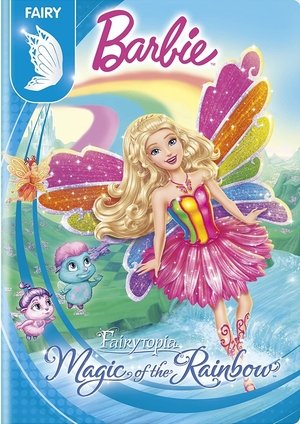 6.9
6.9Barbie Fairytopia: Magic of the Rainbow(en)
Elina goes to a fairy school to learn dancing and fairy magic. The spring of the fairy land is soon threatened by evil Laverna who intends to prevent fairies from performing the annual vital rainbow dance. Elina must stop quarreling with her fellow students and unite them to save the first bud of the spring.
 6.6
6.6Barbie Presents: Thumbelina(en)
Meet a tiny girl named Thumbelina who lives in harmony with nature in the magical world of the Twillerbees that's hidden among the wildflowers. At the whim of a spoiled young girl named Makena, Thumbelina and her two friends have their patch of wildflowers uprooted and are transported to a lavish apartment in the city.
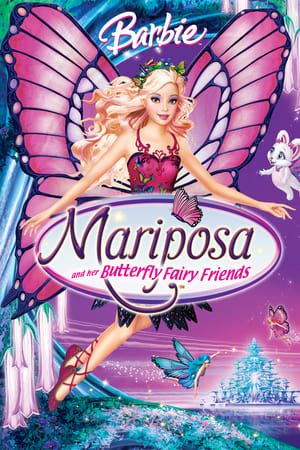 6.8
6.8Barbie Mariposa(en)
Elina, heroine of the Fairytopia films tells her friend Bibble the story of Flutterfield, a faraway kingdom populated by fairies with butterfly wings. Henna, the evil butterfly fairy has poisoned the queen of Flutterfield in an attempt to take over the kingdom.
 7.3
7.3Barbie: A Fashion Fairytale(en)
Join Barbie in a colourful, modern-day fairytale filled with fashion, friends and fun! Barbie and her dog Sequin jet off to visit her Aunt's amazing fashion house in Paris, and much to her surprise it's about to be shut down forever. After she discovers three enchanting Flairies with sparkle-magic powers, Barbie comes up with a brilliant idea to save the business. She even inspires Alice, a shy fashion designer, and together they create a dazzling runway fashion show. Barbie shows that magic happens when you believe in yourself.
 6.9
6.9Barbie: A Fairy Secret(en)
Get ready for Barbie: A Fairy Secret, an amazing adventure with Barbie where she discovers there are fairies living secretly all around us! When Ken is suddenly whisked away by a group of fairies, Barbie's two fashion stylist friends reveal they are actually fairies and that Ken has been taken to a magical secret fairy world not far away! Barbie and her rival Raquelle take off with the fairy friends on an action-packed journey to bring him back. Along the way they must stick together and learn that the real magic lies not just in the fairy world itself, but in the power of friendship.
 7.1
7.1Barbie in A Mermaid Tale 2(en)
Surf's up for Barbie as she returns as Merliah, the fun and fashionable surfing champion who's also a magical mermaid princess! In this exciting sea-quel, Merliah makes a splash when she heads to Australia for the ultimate surfing competition. When the evil mermaid Eris escapes from her whirlpool with plans to take over the throne of Oceana, Merliah and her sea friends dive in to stop her. It's a fresh new adventure where Merliah learns that anything is possible and she really can have the best of both worlds!
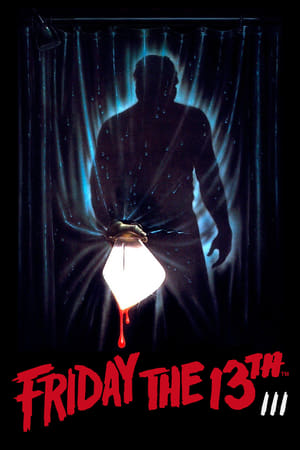 5.9
5.9Friday the 13th Part III(en)
An idyllic summer turns into a nightmare of unspeakable terror for yet another group of naïve friends. Ignoring Camp Crystal Lake's bloody legacy, one by one they fall victim to the maniacal Jason, who stalks them at every turn...
 7.0
7.0Barbie as Rapunzel(en)
Long, long ago, in a time of magic and dragons, there lived a girl named Rapunzel who had the most beautiful radiant hair the world had ever seen. But Rapunzel's life was far from wonderful. She lived as a servant to Gothel, a jealous, scheming witch who kept her hidden deep in a forbidding forest, guarded by the enormous dragon Hugo and surrounded by an enchanted glass wall. However, in a twist of fate, Rapunzel's discovery of a magic paintbrush leads her on a journey that will unravel a web of deception, bring peace to two feuding kingdoms, and ultimately lead her to love with the help of Penelope, the least intimidating of dragons!
 7.6
7.6Kathleen Madigan: Madigan Again(en)
Kathleen Madigan drops in on Detroit to deliver material derived from time spent with her Irish Catholic Midwest family, eating random pills out of her mother's purse, touring Afghanistan, and her love of John Denver and the Lunesta butterfly.
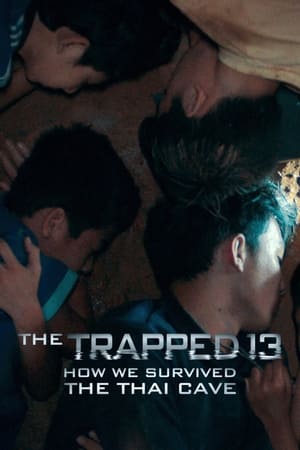 6.3
6.3The Trapped 13: How We Survived The Thai Cave(th)
In this compelling documentary, members of the Thai youth soccer team tell their stories of getting trapped in Tham Luang Cave in 2018 — and surviving.
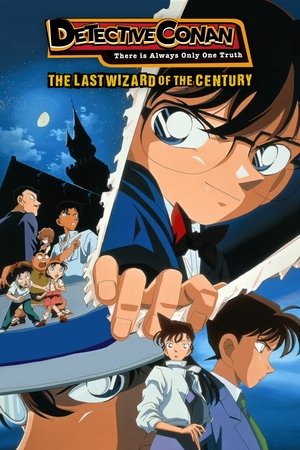 7.3
7.3Detective Conan: The Last Wizard of the Century(ja)
Kaitou Kid dares to challenge the police once more, setting his sights on the Russian Imperial Easter Egg. With the date, time, and place, the Osaka police force scrambles to stop him. But this time, Kid may have bitten off more than he can chew—Conan Edogawa, Heiji Hattori, and numerous others are also trying to get their hands on the jeweled egg.
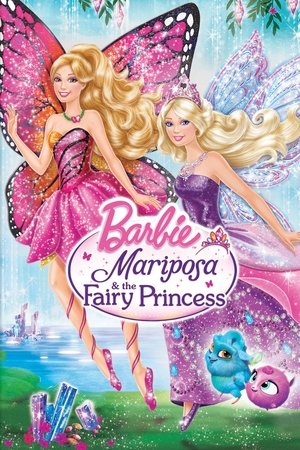 6.9
6.9Barbie Mariposa & the Fairy Princess(en)
Mariposa becomes the Royal Ambassador of Flutterfield, and is sent to bring peace between her fairy land and their rivals, the Crystal Fairies of Shimmervale. While Mariposa doesn't make a great first impression on the King, she becomes fast friends with his shy daughter, Princess Catania. However, a misunderstanding causes Mariposa to be banished from their fairy land. As Mariposa and Zee returns to Flutterfield, they encounter a dark fairy on her way to destroy Shimmervale. Mariposa rushes back and helps Princess Catania to save their fairy land and together, the two girls prove that the best way to make a friend, is to be a friend.
 7.2
7.2Barbie in 'A Christmas Carol'(en)
On Christmas Eve, Kelly is reluctant to go to a Christmas Eve ball, so Barbie tells her the story of Eden Starling, a glamorous singing diva in the Victorian England and the owner of a theatre house. However, Eden is self-centered and loves only herself. She is frequently accompanied by her snooty cat, Chuzzlewit. She does not believe in Christmas and orders all her employees to work on Christmas.
 8.1
8.1LEGO Scooby-Doo! Knight Time Terror(en)
Mystery Inc. is summoned to investigate occurrences in a haunted villa, where a black knight terrorizes anybody who tries to get close to treasure hidden by the former owner of the building.
 7.2
7.2Barbie in A Mermaid Tale(en)
Barbie stars as Merliah, a surfer who learns a shocking secret: she's a mermaid! She and her dolphin friend set out for an undersea adventure to rescue her mother, the queen of Oceana.
 6.5
6.5Aaliyah: The Princess of R&B(en)
The story of R&B singer and actress Aaliyah; namely, the highs and lows of her career, her romantic pursuits, and the events leading up to her death in 2001 at the age of 22.
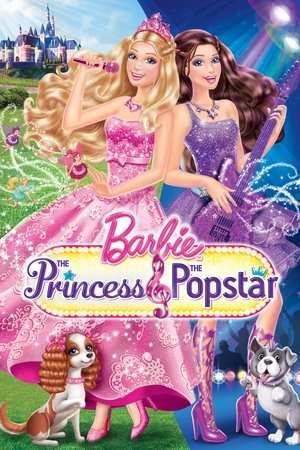 7.2
7.2Barbie: The Princess & the Popstar(en)
Tori is a blonde princess who is bored of living her royal life, and has dreams of becoming a popstar. Keira, on the other hand, is a brunette popstar who dreams of being a princess. When the two meet, they magically trade places, but after realising it is best to be themselves.
 6.2
6.2Radio Rebel(en)
High school senior Tara is so painfully shy that she dreads speaking to anyone in the hallways or getting called on in class. But in the privacy of her bedroom with her iPod in hand, she rocks out -- doing mock broadcasts for Miami's hottest FM radio station, which happens to be owned by her stepfather. When a slot opens up at The SLAM, Tara surprises herself by blossoming behind the mike into confident, "Radio Rebel" -- and to everyone's shock, she's a hit!
 6.2
6.2'R Xmas(en)
A New York drug dealer is kidnapped, and his wife must try to come up with the money and drugs to free him from his abductors before Christmas.
 5.8
5.8The Price We Pay(en)
After a pawn shop robbery goes askew, two criminals take refuge at a remote farmhouse to try to let the heat die down, but find something much more menacing.
Similar Movies
 6.4
6.4Primary(en)
Primary is a documentary film about the primary elections between John F. Kennedy and Hubert Humphrey in 1960. Primary is the first documentary to use light equipment in order to follow their subjects in a more intimate filmmaking style. This unconventional way of filming created a new look for documentary films where the camera’s lens was right in the middle of what ever drama was occurring. Preserved by the Academy Film Archive in partnership with The Film Foundation in 1998.
Screen Actors(en)
This short film takes a look at the off-screen personas of screen actors. Preserved by the Academy Film Archive in 2012.
 5.0
5.0The Town(en)
The Town was a short propaganda film produced by the Office of War Information in 1945. It presents an idealized vision of American life, shown in microcosm by Madison, Indiana. It was created primarily for exhibition abroad, to provide international audiences a more well-rounded view of America, and was therefore produced in more than 20 translations. Preserved by the Academy Film Archive in 2012.
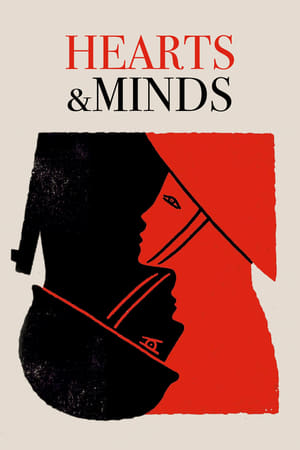 7.7
7.7Hearts and Minds(en)
Many times during his presidency, Lyndon B. Johnson said that ultimate victory in the Vietnam War depended upon the U.S. military winning the "hearts and minds" of the Vietnamese people. Filmmaker Peter Davis uses Johnson's phrase in an ironic context in this anti-war documentary, filmed and released while the Vietnam War was still under way, juxtaposing interviews with military figures like U.S. Army Chief of Staff William C. Westmoreland with shocking scenes of violence and brutality.
 7.6
7.6Burden of Dreams(en)
The Amazon rain forest, 1979. The crew of Fitzcarraldo (1982), a film directed by German director Werner Herzog, soon finds itself with problems related to casting, tribal struggles and accidents, among many other setbacks; but nothing compared to dragging a huge steamboat up a mountain, while Herzog embraces the path of a certain madness to make his vision come true.
 0.0
0.0The Costume Designer(en)
This short focuses on the job of the costume designer in the production of motion pictures. The costume designer must design clothing that is correct for the film historically and geographically, and must be appropriate for the mood of the individual scene. We see famed costume designer Edith Head at work on a production. The Costume Designer was part of The Industry Film Project, a twelve-part series produced by the film studios and the Academy. Each series episode was produced to inform the public on a specific facet of the motion picture industry. Preserved by the Academy Film Archive in 2012.
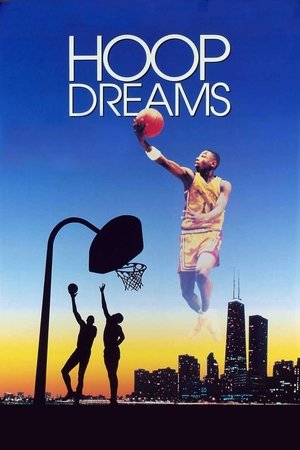 7.6
7.6Hoop Dreams(en)
Every school day, African-American teenagers William Gates and Arthur Agee travel 90 minutes each way from inner-city Chicago to St. Joseph High School in Westchester, Illinois, a predominately white suburban school well-known for the excellence of its basketball program. Gates and Agee dream of NBA stardom, and with the support of their close-knit families, they battle the social and physical obstacles that stand in their way. This acclaimed documentary was shot over the course of five years.
 7.5
7.5Harlan County U.S.A.(en)
This film documents the coal miners' strike against the Brookside Mine of the Eastover Mining Company in Harlan County, Kentucky in June, 1973. Eastovers refusal to sign a contract (when the miners joined with the United Mine Workers of America) led to the strike, which lasted more than a year and included violent battles between gun-toting company thugs/scabs and the picketing miners and their supportive women-folk. Director Barbara Kopple puts the strike into perspective by giving us some background on the historical plight of the miners and some history of the UMWA. Preserved by the Academy Film Archive in partnership with New York Women in Film & Television in 2004.
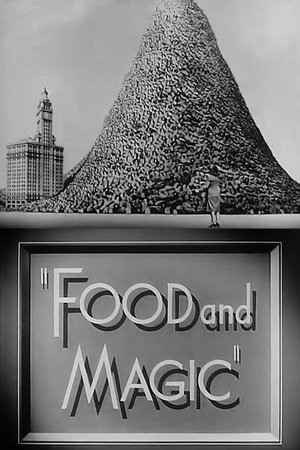 5.0
5.0Food and Magic(en)
A sideshow barker uses magic and visual aids to alert the public that proper food management is both a resource and a weapon that could be to America's advantage if conserved properly in winning the then current World War. Preserved by the Academy Film Archive, Academy War Film Collection, in 2008.
 4.0
4.0I Don't Know(en)
A truly major work, I Don’t Know observes the relationship between a lesbian and a transgender person who prefers to be identified somewhere in between male and female, in an expression of personal ambiguity suggested by the film’s title. This nonfiction film – an unusual, partly staged work of semi-verité – is the first of Spheeris’s films to fully embrace what would become her characteristic documentary style: probing, intimate, uncompromising. Preserved by the Academy Film Archive in 2014.
 7.7
7.7Marjoe(en)
Part documentary, part expose, this film follows one-time child evangelist Marjoe Gortner on the "church tent" Revivalist circuit, commenting on the showmanship of Evangelism and "the religion business", prior to the start of "televangelism". Preserved by the Academy Film Archive in 2005.
 6.0
6.0The Chair(en)
Follows a crusading lawyer as he embarks on a campaign to save an African-American man, Paul Crump, from the electric chair. Preserved by the Academy Film Archive in partnership with The Film Foundation in 2007.
 6.4
6.4The Wormwood Star(en)
A portrait of artist, actress, poet and occultist Marjorie Cameron, it shows images of her paintings and recitations of her poems. Preserved by the Academy Film Archive in 2006.
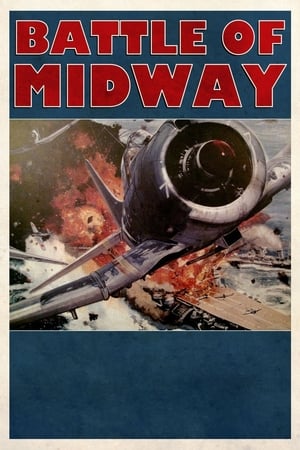 5.8
5.8The Battle of Midway(en)
The Japanese attack on Midway in June 1942, filmed as it happened. Preserved by the Academy Film Archive, in partnership with Twentieth Century Fox Film Corporation, in 2006.
 0.0
0.0California's Golden Beginning(en)
A description and enactment of the discovery of gold by James Marshall, and the role played by John Sutter. Preserved by the Academy Film Archive.
The Cinematographer(en)
A behind-the-scenes look at the responsibilities of the cinematographer. Preserved by the Academy Film Archive in 2012.
 6.0
6.0The Battle of San Pietro(en)
This documentary movie is about the battle of San Pietro, a small village in Italy. Over 1,100 US soldiers were killed while trying to take this location, that blocked the way for the Allied forces from the Germans. Preserved by the Academy Film Archive in 2005.
 6.2
6.2The Fighting Lady(en)
Oscar winner William Wyler directed this 1944 "newsdrama," narrated by Lieut. Robert Taylor, USNR (Bataan), and photographed in zones of combat by the U.S. Navy. The film follows one of the many new aircraft carriers built since Pearl Harbor, known as THE FIGHTING LADY in honor of all American carriers, as it goes into action against the Japanese in the Pacific Ocean in 1943. See the ship and its pilots undergo their baptism of fire, attacking the Japanese base on Marcus Island. Preserved by the Academy Film Archive in partnership with The Film Foundation.
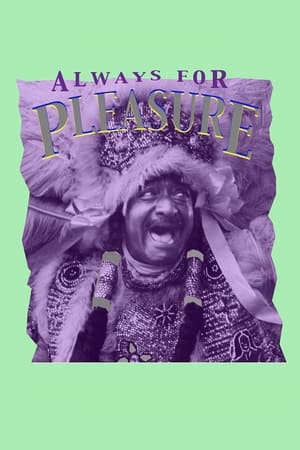 7.3
7.3Always for Pleasure(en)
An intense insider's portrait of New Orleans' street celebrations and unique cultural gumbo: Second-line parades, Mardi Gras, Jazz Fest. Features live music from Professor Longhair, the Wild Tchoupitoulas, the Neville Brothers and more. This glorious, soul-satisfying film is among Blank's special masterworks. Preserved by the Academy Film Archive in 1999.
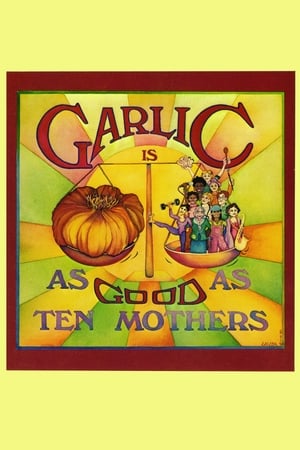 7.5
7.5Garlic Is as Good as Ten Mothers(en)
A zesty paean of praise to the greater glories of garlic. This lip-smacking foray into the history, consumption, cultivation and culinary/curative powers of the stinking rose features chef Alice Waters of Chez Panisse, and a flavorful musical soundtrack. Preserved by the Academy Film Archive in 1999.
